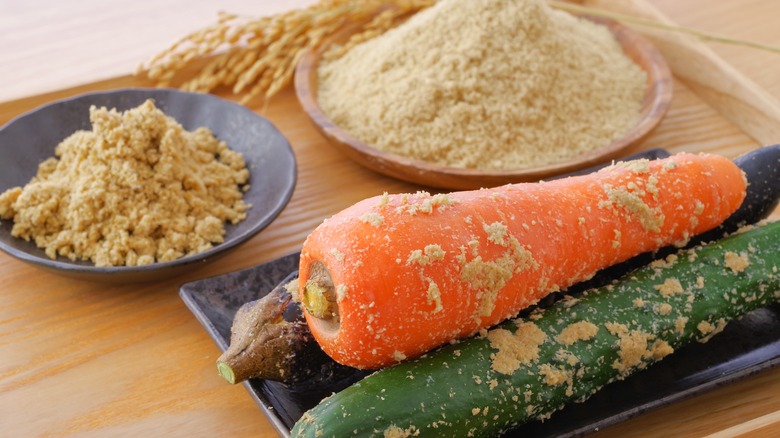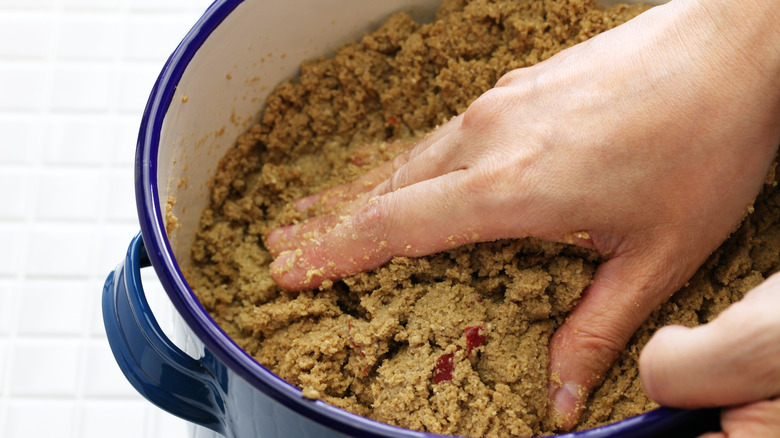Bury Veggies In A Bed Of Rice Bran For Umami Bursting Pickles
Pickling is one of the oldest forms of food preservation and encompasses numerous methods. In the West, we're accustomed to brine or vinegar solutions creating a juicy, tangy, salty crunch for veggies. In the Far East, pickling and fermentation are more developed practices that include many unique methods and flavors. The Japanese practice of making nukadoko, for example, pickles veggies by burying them in a bed of fermented rice bran.
Similar to a sourdough starter, nukadoko is a fermented foundation that you can use over and over with maintenance. Also, like a sourdough starter, you can create new nuka beds by using a scoop of the original fermented bran mixture. Rice bran is similar to wheat bran. It's the outer layer of a grain of rice that's extracted during the refining process. Mixing it with brine and letting it sit for 10 to 20 days creates an actively fermented environment that will effectively pickle any vegetables you bury in it in a matter of days.
Furthermore, you can season the rice bran bed with ingredients like seaweed, dried shiitakes, and garlic to impart an even stronger umami punch. Nukadoko pickled vegetables have the sour juiciness of brine-pickled vegetables, but the fermented bran gives them a unique, miso-like umami flavor upgrade.
How to create and maintain a nukadoko rice bran bed
Despite the complex and delicious transformation nukadoko vegetables undergo, creating a nuka rice bran bed is a straightforward process. It starts with toasting the rice bran to dry it out so that it can best absorb the saltwater brine. After heating water and salt to create the brine solution, add it to the cooled, toasted oat bran. Then, mix it with your bare hands until the bran obtains the texture of wet sand. You can also throw in dried seaweed, mushrooms, seasonings, and aromatics for extra flavor.
Once you've packed and patted down the bran bed in a fermenting vessel, cover it with a top and leave it slightly ajar. Then, place the vessel in a dark, cool place for a minimum of 10 days, stirring and repacking the bran bed once a day. If you want to speed up the fermentation process, you can stir in a tablespoon of beer or bury pieces of bread in the bran. A strange miso-like or funky odor and a tangy taste to the rice bran bed signal successful fermentation.
Before placing your veggies in the rice bran bed, remove any buried seasoning ingredients you added. You can then use the bran to pickle any type of vegetable, fruit, or other food item. It'll take between one and two days to pickle nukadoko veggies. You can continue to use the bran bed for future pickling, but you'll need to stir the mixture at least three times a week to maintain its viability.

